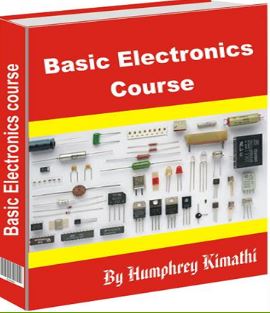This is a type of thermistor which has is resistance
decrease when its temperature increases.
Because of this characteristics N.T.C are used in circuits which require low initial and then high current.
Example: When you first power on the TV (s.m.p.s) at first
you notice the main power flickers, this is because in the television power
supply there is usually a big capacitor (rated around 400Volts)
When the TV/monitor is off this capacitor usually discharges
and as you know if capacitor has no charge on it, it has low resistance and
therefore when you power ON the set, the power will see low resistance path and
therefore there is inrush of current.
This can trigger the fuse to blow thanks to this component
called N.T.C which is usually placed in series with the power supply positive
rail.
When the set is switched ON this component is usually cold
and hence high resistance and therefore this high resistance will hold (resist)
this inrush of current briefly before the main capacitor charges and its
resistance increases smoothly.
In some power supplies they don’t use this component (N.T.C)
but instead they use low resistor (usually high wattage but low resistance)
called surge limiter resistor and others call it dropper.
Testing N.T.C: Set you meter (digital or analogue) to low
ohm range and if it is good usually will show very low resistance (remember this
component is placed in series, component in series should never read open
otherwise current will not flow)
If you don’t get any meter reading then it is open and
considered bad (open).
If this component opens, this will cut the main voltage to
the main capacitor because it is in series with the power supply.
You can also test it In-circuit by doing voltage testing.
You should have same voltage on both pins. You can use the same method to test
the surge limiter resistor, but in both cases be sure to use the main capacitor
negative pin as your ground.
Note: When doing voltage testing and find no voltage at the
main capacitor and the main fuse is not shorted (no short) then you can check
components in-series with the supply which may be open using voltage testing.
Just get a schematic diagram of that equipment and look out
for the components in series with the supply.
You should get voltage on both sides of the pins of all
components in series otherwise the component should be considered open if you
don’t get reading on both sides (pins)
You can confirm the component is actually open by using ohm
meter.
When measuring resistance always, be sure the equipment is
not powered and capacitors are discharged.
This is an extract from my basic electronics course and therefore if you want to go a notch higher you can click on book cover for more info.


Enter your comment...Thanks for your good hard working.
ReplyDeleteThanks and welcome Bala
DeleteRegards Humphrey
Dear Humphrey,
ReplyDeletethank you for your articles.
They are very informative.
I would suggest that you correct the following "...and if it is good usually will show very low resistance..."
I think NTC will show high resistance if it is cold.
Thank you again
George
Hi George, when testing with a meter when cold (diode mode) will actually beep, that is why i said low resistance. when hot the resistance will be very low. remember this is happens immediately on switch on to offer some resistance so prevent the fuse from blowing up since that time the main capacitor is low resistance across the power line..am i making sense?
DeleteRegards Humphrey
Hi Humphrey,
ReplyDeletethanks for your informative article. May God bless you!
Hi Emmanuel, thanks for your feedback and God bless you too.
DeleteRegards Humphrey